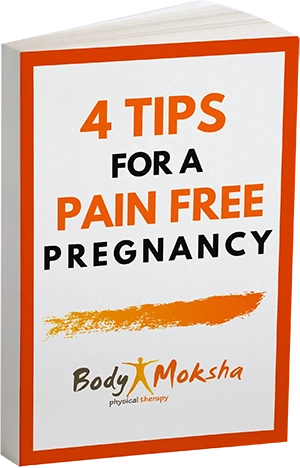4 Tips For A Pain Free Pregnancy
BIO:

Since 2002, Dr. Tejal Ramaiya has been helping athletes and active adults get back to the workouts and training they’re missing out on when everything else has let them down. Since she graduated with her Master’s in Physical Therapy in 2002 and then her Doctorate in Physical Therapy in 2004 from University of Medicine and Dentistry of New Jersey, she has been working with active adults on a daily basis. The majority of her clientele are triathletes but she also really enjoys working with active adults, Golfers, Yogis, Pilates enthusiasts, CrossFitters and High School Athletes.
Over the years, she has earned a number of specialized certifications which make her well equipped to work with this active population. Some of these include:
Certification in Strength and Conditioning Trigger Point Dry Needling
Kinesiotaping Graston technique
Titleist Performance Institute Golf Fitness Professional
Functional Movement Screening and Selective Functional Movement Assessment
When not at work, she enjoys hiking, chilling at the beach, and taking fun vacations with her family.
Introduction
Are you currently pregnant and experiencing discomfort and low back pain? Are you in early stages of pregnancy and worried about developing back pain, especially as you enter the third trimester? Having difficulty finding a comfortable position in bed? Maybe your feet have been swollen and achy after a long day of work? While this is common, pain is never normal and you do not have to accept it as a part of your experience. See a pelvic floor physical therapist or a physical therapist with experience in pregnant clients to address all these concerns.
Low back pain is one of the most common areas to experience pregnancy related pain because of the anatomical changes occurring at the pelvis to prepare your body for delivery. There is less passive stability in the joints of the pelvis and low back as the ligaments become more lax to allow for the expansion of the pelvis. Ironically, this is the time when pregnant women need stability the most as they accommodate for the strain of additional weight as their baby grows. To compensate for the lack of passive stability, low back and hip muscles will provide active stability. If you have not been strengthening these areas with a physical therapist prior to this point in the pregnancy, the muscles will try to add that support by tightening and spasming, which can be quite painful.
TIP #1: FIND YOUR STRENGTH
If you are worried about strength training while pregnant, a pelvic floor PT will show you modifications for positioning and know how to safely prescribe exercises that won’t hurt you or the baby. Your PT will take into account your prior level of exercise, your specific pain concerns, your stage of pregnancy, and any other pregnancy related conditions when prescribing you exercises. While you can certainly find resources with pregnancy safe exercises online, they will not be as specifically tailored to your needs as they would if you were to be seen by a therapist.
Additionally, your therapist can coach your technique to ensure safety with the exercises they prescribe. Some examples of strengthening exercises would include birddog, side plank, squats, and suitcase carries.
TIP #2: UNWIND
As stated above, if the muscles of your low back and hips are tight and in spasm, they likely need some gentle mobility exercises and manual therapy, like soft tissue massage to the low back and feet. In addition to helping alleviate pain in the present, gentle stretches and restorative yoga positions can also promote relaxation through the pelvic floor to prepare your body for delivery and decrease trauma to the tissues of the birth canal. This will lead to easier postpartum recovery and decreased severity of incontinence and pelvic pain following delivery. As your pregnancy progresses, there are some positional considerations that your therapist will take into consideration like avoiding laying on your back and avoiding pelvic inversion. Some examples of restorative exercises include supported child’s pose, inclined figure-4, diaphragmatic breathing, and cat-cow.
TIP #3: GET A COZY NIGHT’S SLEEP
As your baby and belly grow, it can get increasingly difficult to not only get in and out of bed independently, but to sleep soundly. Along with strengthening, there are other tools and tricks you can use to improve your mobility in bed. Some examples include using an attachable bed rail, getting a step stool for the side of your bed if it is high, and specific sequences of body movements to use your body mechanics more efficiently. Your therapist can also show you ways to use pillows, a pregnancy pillow, or bolsters to maintain your body in a comfortable and neutral position to get a more comfortable night’s sleep. These are best learned in person with your physical therapist.
TIP #4: BRING YOUR PARTNER TO PT DAY
ave you begged your partner for a back rub and foot rub and either been turned down or not been given a proper massage? Bring your partner in with you during all or part of your session and your therapist can show them the right areas and techniques to massage the areas effectively so that you can get pain relief at home as well as in the clinic. Doctor’s orders!
Many women are worried about perineal tears. The perineum is the part of your body between your vaginal opening and your anus. You can prevent tears during delivery by performing a perineal massage, pelvic breathing, pelvic floor muscle lengthening, and improving your hip mobility. See a pelvic floor PT to learn more about how to prepare you body for the big day!
MEDICAL DISCLAIMER
We make every effort to ensure that we accurately represent the injury advice and prognoses dis- played throughout this Report.
However, examples of injuries and their prognosis are based on typical representations of those injuries that we commonly see in our Physical Therapy clinics. The information given is not intended as representations of every individual’s potential injury. As with any injury, each person’s symptoms can vary widely and each person’s recovery from injury can also vary depending upon background, genetics, previous medical history, application of exercises, posture, motivation to follow Physical Therapist advice and various other physical factors.
It is impossible to give a 100% completely accurate diagnosis and prognosis without a thorough physical examination and likewise the advice given for management of an injury cannot be deemed fully accurate in the absence of this examination from one of the physical therapists at Body Moksha Physical Therapy.
We are able to offer you this service FREE of any charge. Significant injury risk is possible if you do not follow due diligence and seek suitable professional advice about your injury. No guarantees of specific results are expressly made or implied in this report.


Privacy Policy: We guarantee 100% privacy. Your information will NOT be shared.


